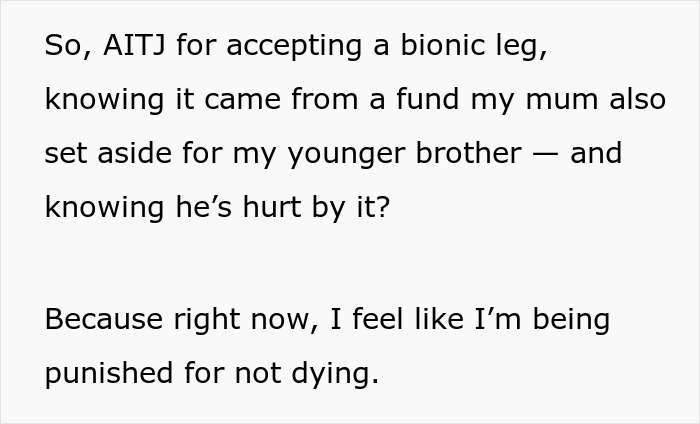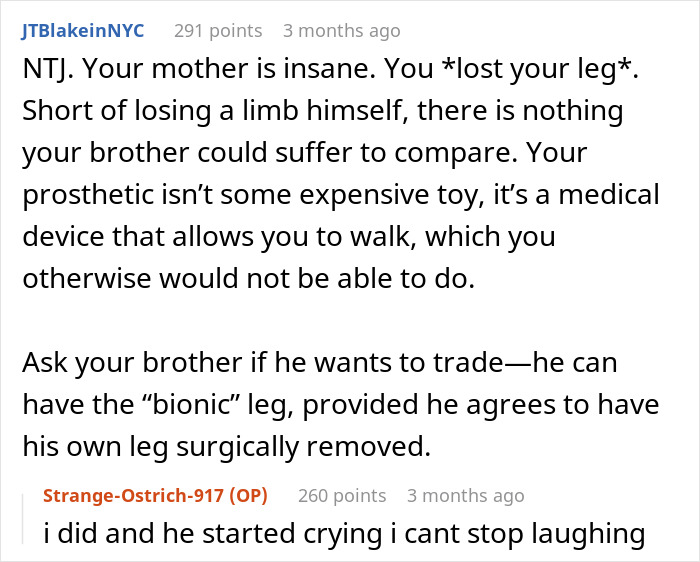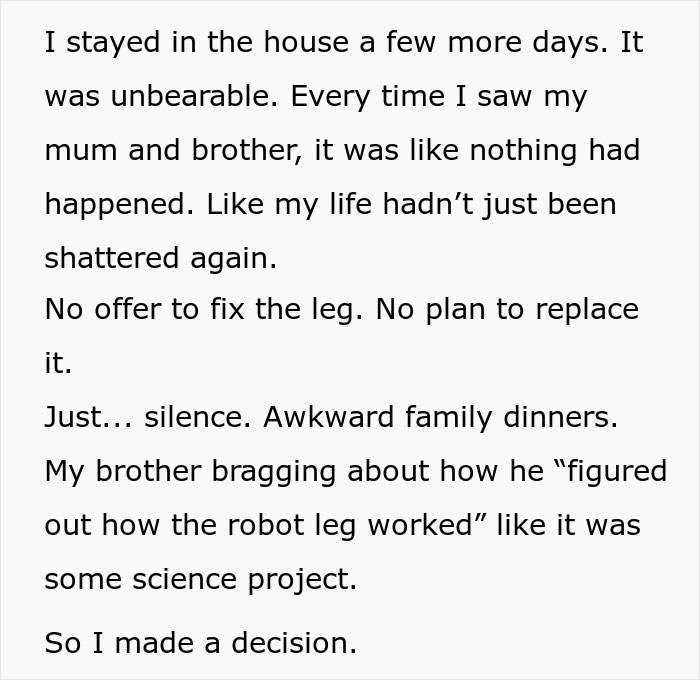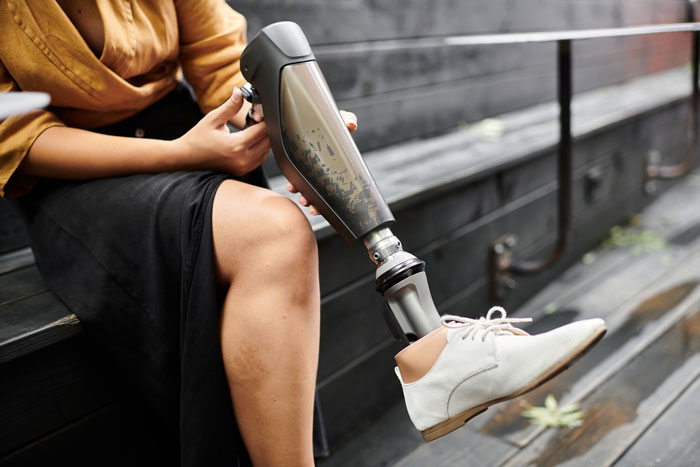Healthcare has advanced tremendously over the years, with technology playing a major role in that progress. One of the most life-changing innovations has been prosthetics, giving people who’ve lost limbs the ability to move freely and regain their independence.
This teen cancer survivor experienced that joy firsthand when she received her own prosthetic leg after an amputation. But her excitement didn’t last long—her younger brother, jealous of the high-tech device, ended up breaking it.
Now heartbroken and unsure how to replace it, she’s turned to Reddit for guidance. Read the full story below.
After losing her leg to cancer, the teen was overjoyed to finally receive a bionic prosthetic

Image credits: Tima Miroshnichenko / Pexels (not the actual photo)
But her happiness was short-lived after her younger brother grew envious of the attention it brought



Image credits: user20119892 / freepik (not the actual photo)




Image credits: freepik (not the actual photo)





Image credits: Strange-Ostrich-917
How do bionic prosthetics actually work?
For those who’ve lost a limb, prosthetics can make everyday life far more manageable. But here’s the thing, you might be surprised to learn just how many people need them but don’t have access.
According to the World Health Organization, around 35–40 million people currently require prosthetic or orthotic services, yet only 1 in 10 actually receive them.
So, what exactly are prosthetics, how do they work, and what makes bionic ones, like the one the teen in this story had, so different from regular models? Let’s break it down.
At their core, prosthetics are artificial limbs designed to replace missing body parts, anything from a hand to a full leg. They’re usually made from lightweight but strong materials like carbon fiber, silicone, or metal.
There are two main types:
- Pre-made (over-the-counter): manufactured in standard sizes, similar to buying clothes off the rack
- Custom-fitted: carefully designed to match a person’s unique body shape, residual limb, and mobility needs
The main purpose is simple: to help someone regain mobility, do everyday tasks, and feel like themselves again.
But not all prosthetics are the same. Some are basic and only help with support, while others use advanced technology to make movements more natural and responsive.
Bionics represent the next generation of prosthetic technology. Rather than simply replacing a limb mechanically, they connect with the user’s nervous system to replicate real movement as closely as possible.

Image credits: Ambreen / freepik (not the actual photo)
Here’s what sets them apart:
- Sensor integration: Bionic limbs have built-in sensors that pick up on muscle movements and body position, allowing the user to move more seamlessly
- Motorized movement: Small motors inside the limb help it bend and move in a way that feels closer to how a real arm or leg would work
- Nerve connection: Some high-tech models can even connect to the body’s nerves, letting the brain send signals to control the limb, almost like a natural one
The technology is truly incredible, but it’s still a luxury few can realistically afford. As Pierre Cherelle, CEO of Belgian startup Axiles Bionics, told Built In: “It’s a very difficult thing to lose a limb. And seeing that in 2025—when everyone has three personal computers at home—and we still have non-articulated feet as being the standard is just sad.”
A basic prosthetic leg (without complex electronics) can cost under $10,000, according to Primecare. A high-end, computerized prosthetic, like a bionic limb controlled by muscle signals, can reach $70,000 or more.
This is exactly why the teen in the story was devastated when hers was broken. It had restored her mobility and offered a sense of normalcy, and fixing or replacing it is costly and difficult.
Hopefully, as technology advances, access improves and those who need these devices can get them without facing such overwhelming financial barriers.
Readers felt the mom handled the situation incredibly poorly














Later, the teen returned with an update, sharing that unfortunately, her brother had broken the prosthetic



Image credits: Steve Johnson / Unsplash (not the actual photo)





Image credits: freepik (not the actual photo)






Image credits: Strange-Ostrich-917
Readers were appalled and even urged her to consider taking legal action





Finally, the teen revealed that she had decided to move out and live with her dad




Image credits: Nataliya Vaitkevich / Pexels (not the actual photo)




Image credits: Ambreen / freepik (not the actual photo)


Image credits: Strange-Ostrich-917
Readers were relieved and happy that she managed to get out of that environment












